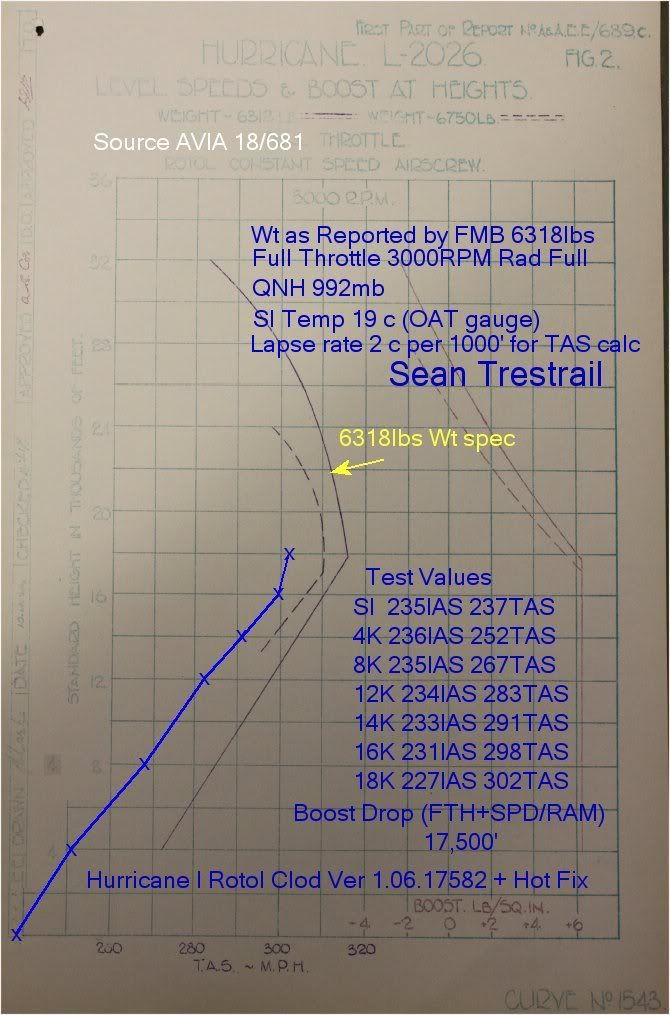
 |
|
#1
|
|||
|
|||
|
As per the Spit IIA Speed test here is my test on the Hurricane. Wt this time as per the full line on the spec.
METHOD Each run commenced on altitude with stabilised Oil/Rad temps Oil Temp at 80deg C. Rad Full open (At present I cannot detect any Rad drag so radiator position is not relevant imo) Each altitude was a specific FMB set up. Altitude maintained +-50ft throughout the test. QNH checked as 992mb on the specific map used. Each run done 3 times and Vmax average plotted. Seal level temp estimated 19 deg C based on HEIII OAT gauge on the same map on the ground. TAS calculation based on standard 2 deg C lapse rate from the surface. so at 16,000ft I was using an OAT of -13deg C My test wt as per the spec wt as it can be achieved in FMB with the Hurricane Power setting was Full throttle 3000RPM. Indicated Boost +5.2. Now its important to understand that displayed Boost is not I believe actually measured in the FM but represents an angular animation value. We all know that it should be indicating +6.25 in the Hurricane Results plotted as accurately as I could.  I had to extrapolate the graph in the lower left corner ! Last edited by IvanK; 06-05-2012 at 10:23 AM. |
|
|